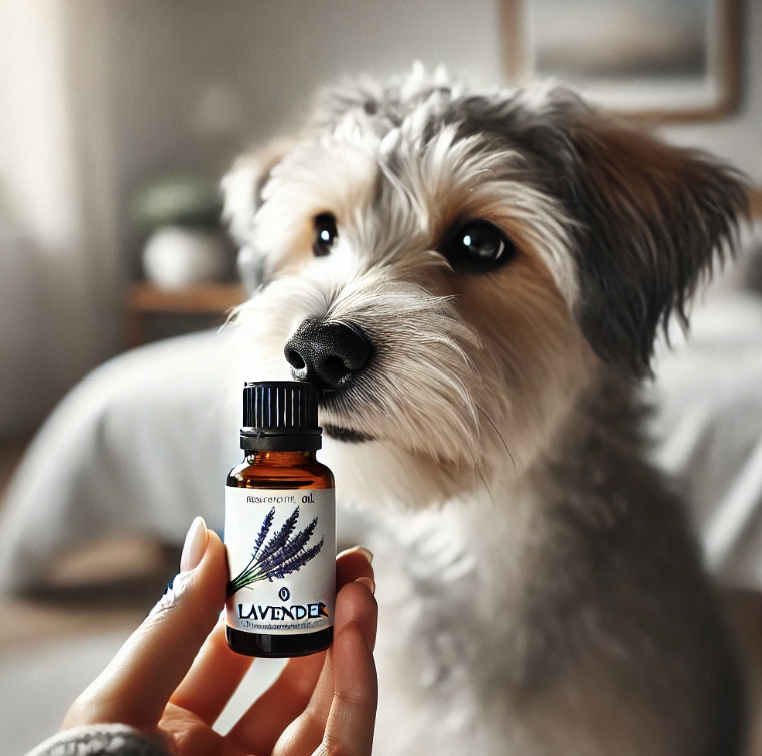Introducing Dogs To Essential Oils
Your dog's nose knows a lot of things and will be very sensitive to smells. That's why it often doesn't take much -- especially if we're working on emotional issues.
Imprinting Essential Oils
Imprinting Essential Oils With Dogs — let them sniff the cap or the bottle with the cap slightly open. Their noses are powerful.
The way in which you introduce your dog to scents creates an imprint. He will start to associate the smell with a state of mind, or danger, or that mean old vets office.
As you start bringing essential oils into your home and for the purpose of therapeutics for your pets, "how" you introduce them to the oils starts to matter. Ideally, you want to create a positive imprint with a calm state of mind. This is exceptionally beneficial to trying to over com car rides, vet visits, and stressful environments.
Diffuse
The gentlest method of introducing a scent is aromatically in the diffuser. Remember your dog's nose is more sensitive than your own -- s/he will smell things you don't. So if you start diffusing an oil and he runs for the hills we need to sort out why that oil isn't a good one for him or her.
Sniff & Smell
The next way to begin introducing oils is to start with gentle oils -- don't start with hot or more intense sensation oils -- think Lavender (Lavandula Angustifolia), Copaiba (Copaifera reticulata), or Frankincense (Boswellia carterii) . Oils that have been prediluted for babies or pets are also available. There are lots of options. But as you progress to some of the hotter, spicier or more "emotional" oils, you will want to use a carrier oil for petting. Remember, right now it's about scent introduction only.
The key is when your dog is calm, open the bottle (I sit on the floor or the couch if they are permitted up there with me). and just let the scent begin to waft into the room. Monitor their response.
Petting for Topical Introduction
Next put it a drop in your hand, rub 2 hands together and maybe apply to your arms or neck. Monitor his response for a while -- in this case you're acting as the diffuser. If all stays calm, add another drop to your palms and just pet the dog. His fur is going to act as a wick drawing the oil to the skin, so you don't have to apply it on the skin. Again monitor his response.
Since this is your first time with any oil, always avoid the eyes, avoid the feet for now, and don't make a big deal out of it. I generally pet from the neck down the spine, the tail and the ears. and even though you may feel that your hand is "dry", you will still be distributing oil for quite a while.
It's important to imprint scent in a calm state of mind so that they are associated in a good way, not a time of panic, booming thunder, emergency or injury. Otherwise, the scent could become a negative association.
Fortunately, dogs respond very well to most essential oils in the same way humans do. But there are some key considerations below.
Also, don’t forget they are far more olfactory-based (sensitive to smell) and metabolize things differently than we do. So go slow on your introductions to new oils. Start with diffusion or carrier oils. Don’t add more “drops” than the recipes you find — more is not always better. Don’t assume that they are magic and things happen instantly — it may take a little time and multiple experiences of oils and blends to see the results.
Follow this imprint introduction for each of the oils you add to your collection.

